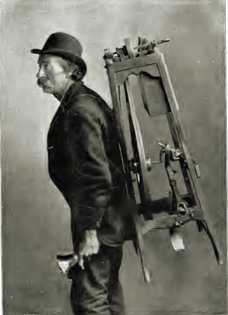 When I was growing up in our neighborhood in New Jersey, there were several types of street vendors that appeared every week, each selling wares from a truck: the fruit and vegetable truck was a favorite because of the way he sang his prices; the ice man too, because in summer he'd always leave chunks for us to cool off with; the sound of the coal truck dumping coal down the chutes of the few remaining buildings still using coal as a fuel is also burned in my memory. But the most interesting to me was the arrotino--the knife grinder. He trudged through the neighborhoods past the Victorian era apartment buildings on foot. I would hear him coming because of the bell he rang while walking--a rather large brass school bell that he swung in sync with his walking gait. When people heard that bell with its distinctive ca-clang-ca-dang pattern, they would grab their dull knifes and scissors or tools and head down to the street to meet him. 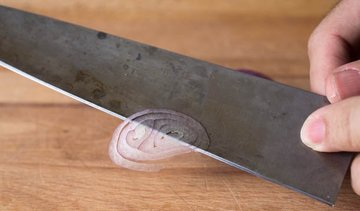 Once in a while my mother would hand me the big kitchen knife and a quarter to go and have him sharpen it. This particular man was fairly old (at least to my young eyes) and a bit arched in his back, but yet he carried his entire sharpening rig and stone on his back via two long leather straps, hitched to him like a big-wheel backpack. I remember the grinding wheel being about 18" in diameter attached to a framework of wood. When a customer wanted something sharpened, he'd unhitch himself from the rig, turn the stone upward and start pumping the treadle with one leg while sparks flew. By the time he was finished, we had a shiny, very sharp knife once again... all for 25 cents.
Walking all day long, often through hilly, cobbled streets was hard work, especially while either carrying or pushing a heavy grinder--some having more than one polishing stone and a box to hold more tools of the trade. The push type rolled along inverted and pushed by holding wooden handles. Once the arrotino found customers, he would turn the grinder rig right-side up and start work. The sharpened kitchen knifes for the casalinga, scythes and butchering knives for contadini (farmers), knives for pescivendolo (fish mongers), cleavers for macellai (butchers), scrapers for stuccatori (plasterers), large knives for cacciatori (hunters) and pocket knives for gentiluomini (gentlemen). The grinding wheel is attached to a rudimentary treadle board which he pumps with one leg to keep the heavy wheel turning. There are either ropes or rubber belts that attach to the various wheels and axles. A can of either water or oil is mounted above the working part of the stone to drip lubricant on the stone while sharpening.. 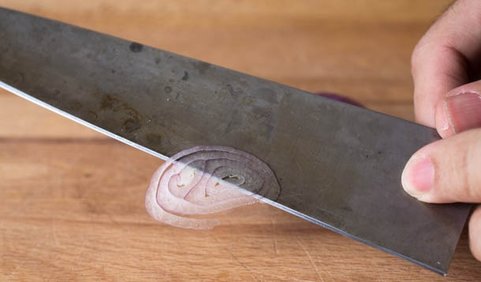 In the old days, l'arrotini were vagabond craftsmen, going from village to village to find clients. He might set up in a village square and eat and sleep where he found food and a hay bed to lay down in. You can imagine that some of his best clients were farmers, not because they might be able to pay his fees, but more often because they could offer food and a comfortable place to sleep. Otherwise, he was mainly self-sufficient, carrying a craticula (an ancient type of BBQ grill), cooking simple meals during his voyages. He cleansed himself at public fountains or in a stream. He returned to his home several times a year, definitely at Christmas and Easter, when a child was born or a relative died, but also for harvesting crops (most in rural Italy still have olives, nuts or grapes to tend). 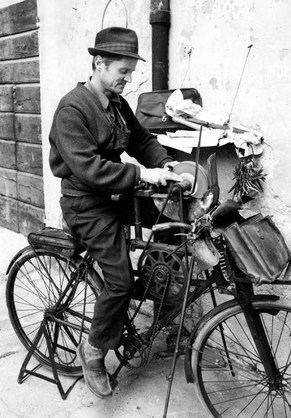 During the 1950s and 60s the advent of the bicycle grinder rig helped arrotini go further, get more work and return to home more often. The grinding wheel was mounted over the front wheel and attached to the pedals by a second drive chain that could use the pedaling action when a lever was flipped. Next came the Vespa scooter and the Tre Ruote Ape (three-wheeled vehicle). In both cases, the motor also drove the grinding wheels. The rear compartment of the Tre Ruote was large enough for arrotini to expand their services--refurbishing and refinishing traditional knives, selling new knives and scissors, offering repairs and parts for old style gas kitchen cookers, and selling and repairing umbrellas, of all things!
"Donne! È arrivato l'arrotino! Arrota coltelli, forbici, forbicine, forbici da seta, coltelli da prosciutto! Donne è arrivato l'arrotino e l'ombrellaio; aggiustiamo gli ombrelli. Ripariamo cucine a gas: abbiamo i pezzi di ricambio per le cucine a gas. Se avete perdite di gas noi le aggiustiamo, se la cucina fa fumo noi togliamo il fumo della vostra cucina a gas." Translation: "Ladies! The Grinder is here! Sharpen knives, scissors large and small, sewing scissors, prosciutto knives! Women, the Grinder and Umbrella Repairman is here; we fix your umbrellas. We repair gas cookers: we have spare parts for your cookers. If your gas is leaking, we'll fix it, if your kitchen is smoking we remove the smoke from your gas cooker." I don't know about you, but I sense a little naughty double entendre in the wording of the announcement... Perhaps the arrotini have sharpened some of their other skills and offer even more personalized services to le donne over the years... putting out the smoking fires in the kitchens of casalinga all over Italy...
Sharpening blades, indeed... Reminds me of the old bawdy blues song lines: "Yea, Babe, I'm your Handyman..." or "Stick out your cans, here comes the garbage man!" --Jerry Finzi And in Our Video Collection: Old Roman Knife Grinder (Arrotino) Explains his Craft L'Arrotini in Venice: Calling All Knife Grinders L'Arrotino: Knife Grinding on a Vespa If you CARE, please SHARE. Grazie. |
On Amazon:
|

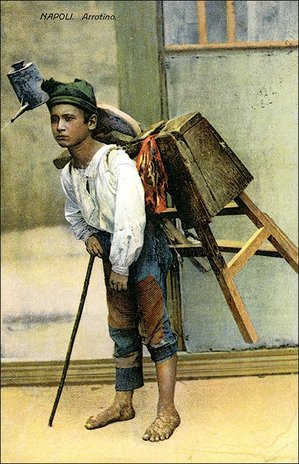
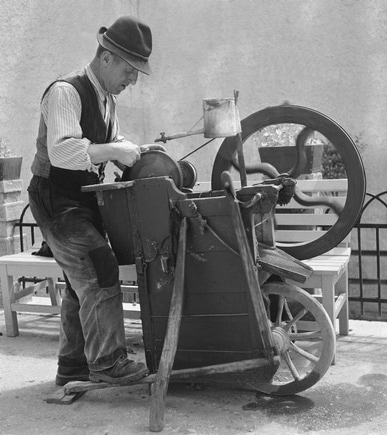
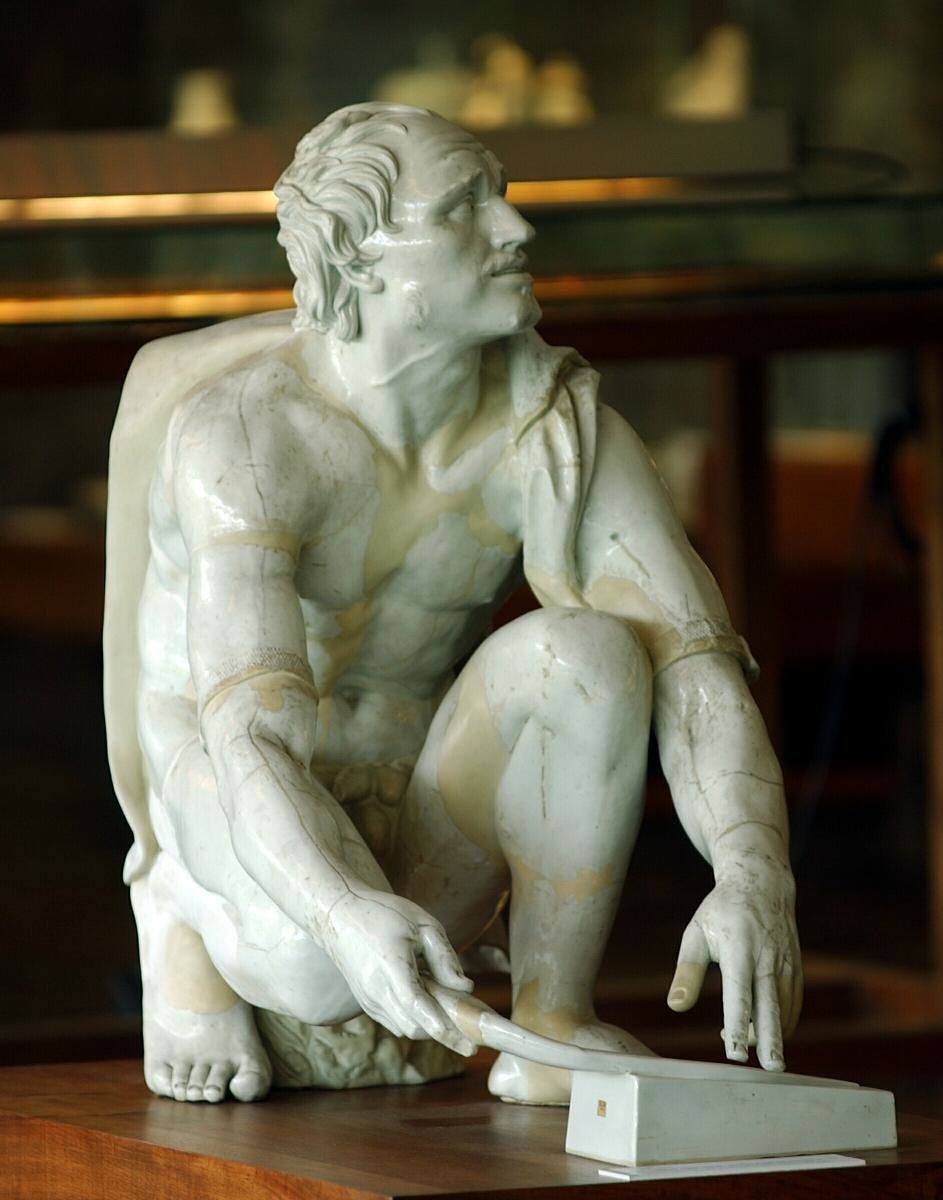
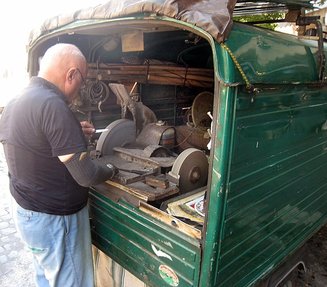
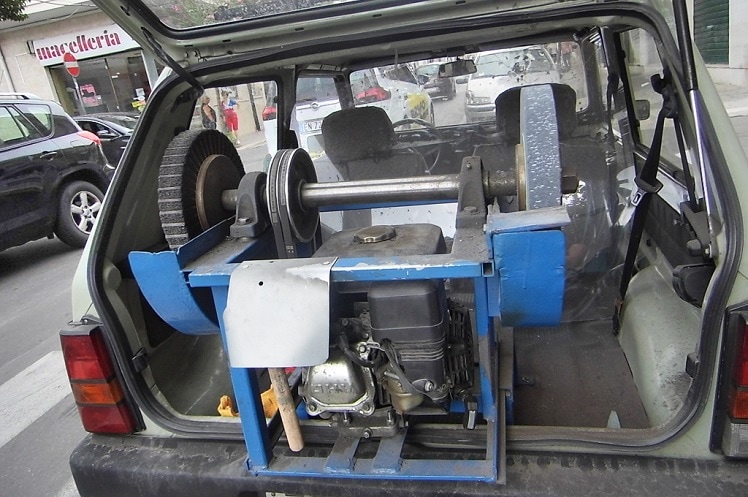
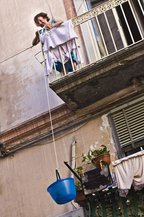
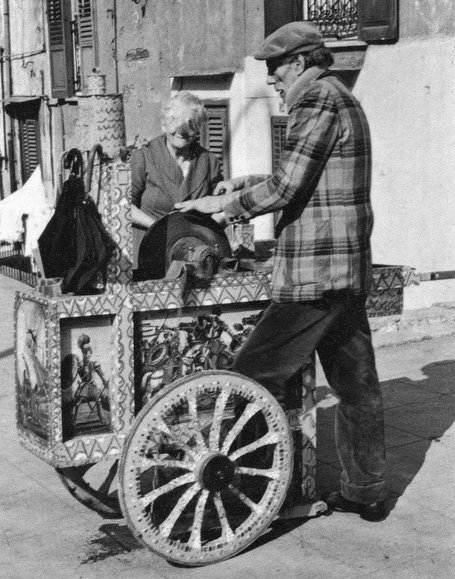
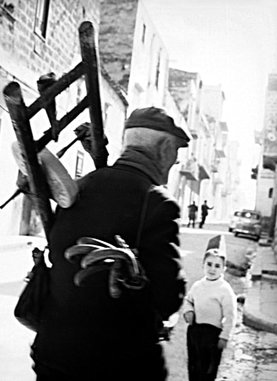
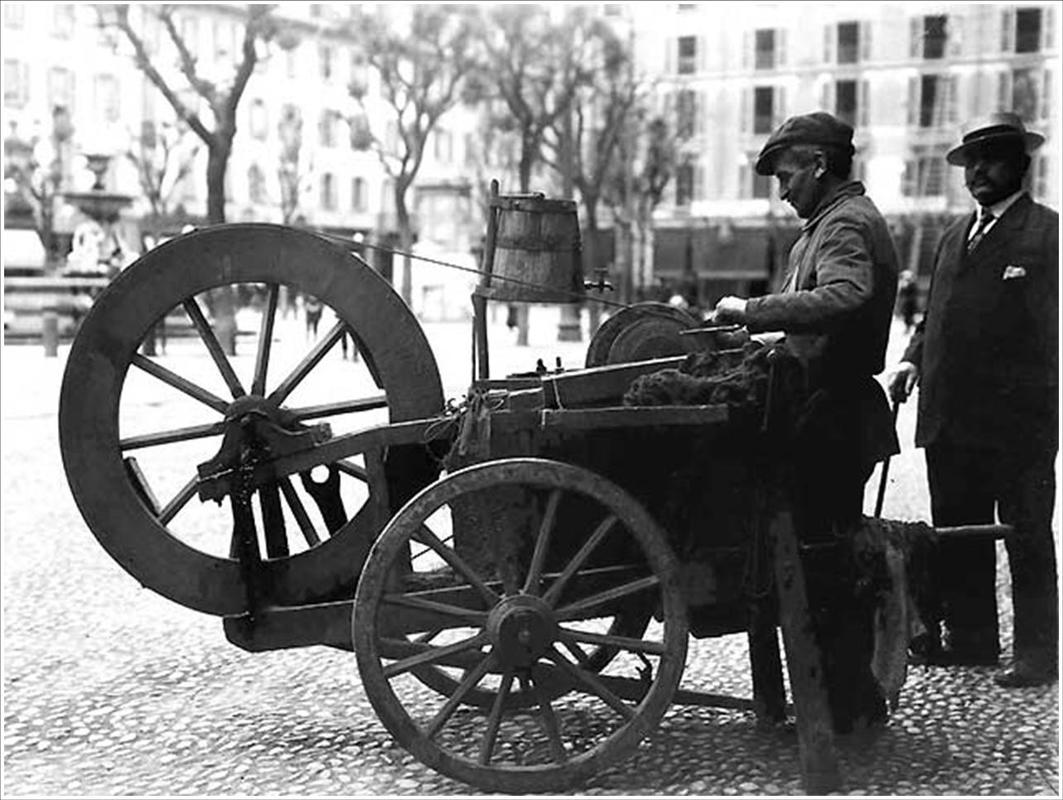
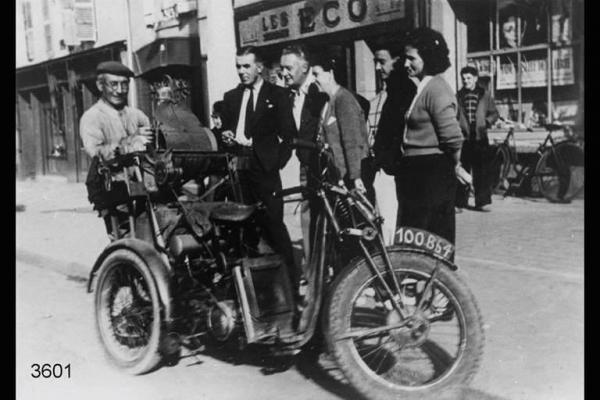
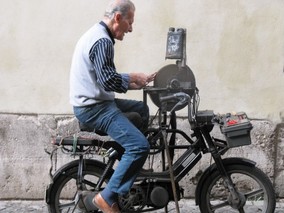
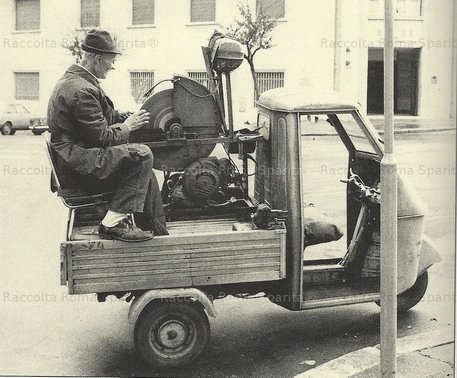

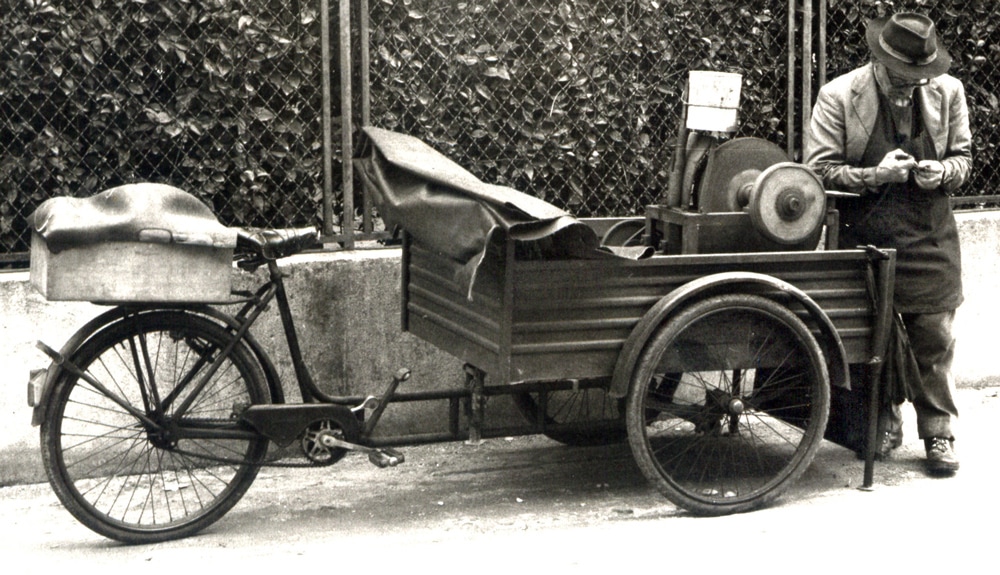
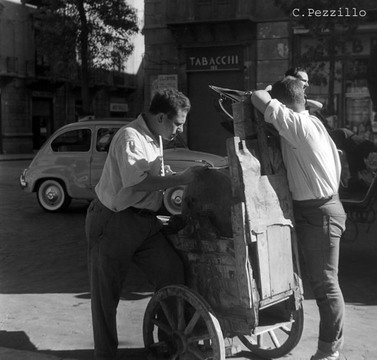
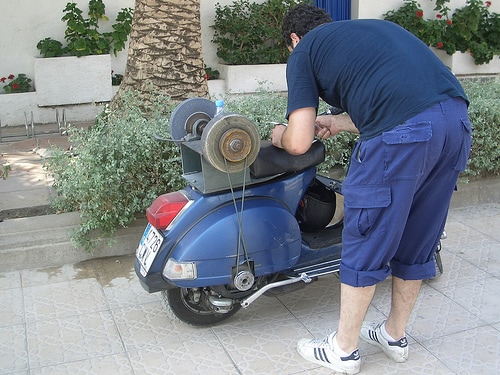
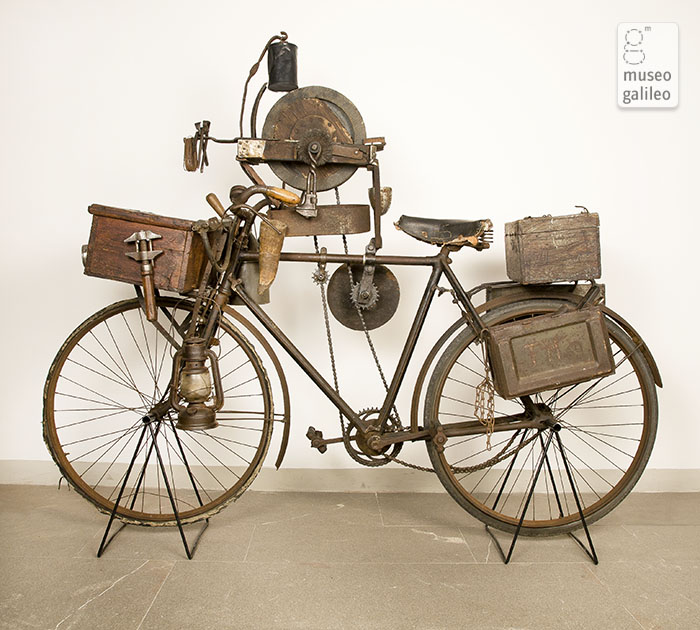



 RSS Feed
RSS Feed
